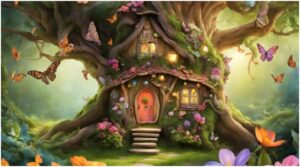Storytelling is a fascinating craft, but what if you could take your narrative to the next level? What if instead of telling just one story, you could weave multiple stories within a single theme, creating a tapestry of perspectives, characters, and experiences that resonate deeply with your audience?
That’s exactly the magic of “Your Topics | Multiple Stories”—a technique that transforms an ordinary narrative into something extraordinary.
Whether you’re a writer, educator, or content creator, mastering this technique can make your projects stand out and captivate your audience. Let’s explore how you can do just that.
What Exactly Are “Multiple Stories”?

You’ve probably seen multi-narrative films, books, or series where different characters experience parallel or intersecting storylines.
Think of films like Cloud Atlas or Pulp Fiction, or even the classic A Christmas Carol. Each of these tells different stories, but they’re all united by one central theme.
The concept of Your Topics | Multiple Stories involves the same principle. You take a central idea—let’s say “hope” or “identity”—and spin it into several individual narratives that showcase different perspectives, settings, and arcs, all while circling back to that unifying theme.
The benefit? It adds depth, complexity, and intrigue. Rather than presenting a single, one-dimensional viewpoint, you offer your audience a broader, more enriched experience.
How Can You Incorporate Multiple Stories into One Topic?

When you first consider writing multiple stories around a single topic, it can feel overwhelming. But it’s actually an incredibly liberating way to approach your narrative. Here’s how to get started:
1. Choose Your Core Topic
The foundation of this technique lies in selecting a topic that’s broad enough to support multiple stories. Your theme should have room for exploration from different angles. It needs to have depth and universal relevance. For instance:
- Love: You could tell different stories about love—romantic, familial, platonic—each with its unique challenges and joys.
- Justice: A courtroom drama, a personal moral dilemma, a social injustice—all these could feed into the overarching theme of justice.
- Fear: From an individual’s phobias to global anxieties, you can approach fear from numerous emotional and social angles.
Whatever topic you choose, ensure it’s flexible and rich enough to allow for different perspectives. This will be the anchor for your stories.
2. Identify Diverse Angles and Perspectives
Once your topic is chosen, think about how it can be explored from different viewpoints. How does it affect various audiences? What emotions or thoughts does it trigger in different people? For example:
- In a story about “family,” you might show:
- A young adult struggling to find their place in their family.
- A parent who feels disconnected from their children.
- An elder reflecting on the changing dynamics of their family as they age.
Each of these perspectives explores family but in vastly different ways.
3. Develop Distinct Story Arcs
Each individual story should have its own narrative structure. Begin, middle, and end. Characters, conflicts, and resolutions need to be unique to each plot. This way, each story stands on its own but also adds to the greater meaning of the theme.
Let’s take the “love” theme again. One story might be about a long-distance relationship, another about unconditional parental love, and yet another about the struggles of self-love. Each story explores love differently but contributes to the larger theme.
What Are the Best Ways to Structure Multiple Stories?

There’s no one-size-fits-all answer to structuring multiple stories under one theme, but here are a few popular options:
1. Alternating Plotlines
One of the most common approaches is to alternate between the different stories. This keeps the pacing dynamic and allows your readers to experience various perspectives without feeling bogged down by long sections in one voice.
For instance, in a novel with multiple characters, you could switch from one protagonist’s point of view to another’s, each time adding depth to the central topic.
2. Multiple Timelines
Another structure you could try involves playing with time. For example, you could have a set of stories that are all set in different time periods—perhaps showing how a certain theme evolves over generations.
This allows for rich contrasts and deepens the narrative, helping your audience see how the central topic has affected people in various historical or future contexts.
3. Frame Story
A frame story is when one central narrative surrounds or “frames” the smaller stories. A famous example is The Canterbury Tales, where each character tells their own story within the overarching journey.
This structure allows for a more cohesive approach and can make the connections between the stories clearer.
How Can You Make Your Multiple Stories Cohesive?

When you’re juggling different narratives, maintaining unity can be a challenge. Here are some tricks to help you keep it all together:
1. Stay Focused on the Central Theme
The unifying theme is the glue that holds everything together. Even if the stories seem unrelated at first, their intersection should emphasize the larger meaning.
So, in a multi-story narrative on fear, you might explore personal fears, societal fears, and existential fears, but in the end, they should all shed light on the same idea of confronting or overcoming fear.
2. Use Common Elements
To enhance cohesion, you can use common elements throughout your different stories—whether it’s a character who appears in every narrative, a shared setting, or recurring imagery.
These threads give the audience something to latch onto and can help make the transitions between different storylines feel seamless.
Frequently Asked Questions (FAQ)
Q1: Can I use multiple genres when telling multiple stories?
Absolutely! Mixing genres—like combining a romance with a thriller, or a historical drama with a fantasy—can be an exciting way to explore your topic.
The key is to keep your central theme consistent while allowing the genre shifts to bring out different facets of the narrative.
Q2: How do I make sure my stories don’t feel repetitive?
The key to avoiding repetition is variety. Each narrative should have its own unique conflict and resolution.
Make sure each character has distinct motivations and challenges, and allow each story to add something new to the conversation around your central theme.
Q3: What if my stories seem too different from each other?
That’s okay! In fact, the contrast can add richness to your narrative. The diversity in stories can highlight the complexity of the central theme. Just make sure that no matter how different the stories are, they all tie back to your core message.
Final Thoughts: The Power of Multiple Stories
Writing with multiple stories is like creating a mosaic, where every piece contributes to a bigger picture. It allows you to explore a theme from diverse perspectives and engage your audience on a deeper level.
So, the next time you sit down to write or create, consider weaving multiple stories around a single topic. The possibilities are endless, and the result will be a narrative that’s rich, dynamic, and full of life.
Pro Tip: Don’t be afraid to experiment. The beauty of multiple stories is that you can break conventional storytelling rules and try new structures, genres, and perspectives. This is your opportunity to be as creative and innovative as you like!
